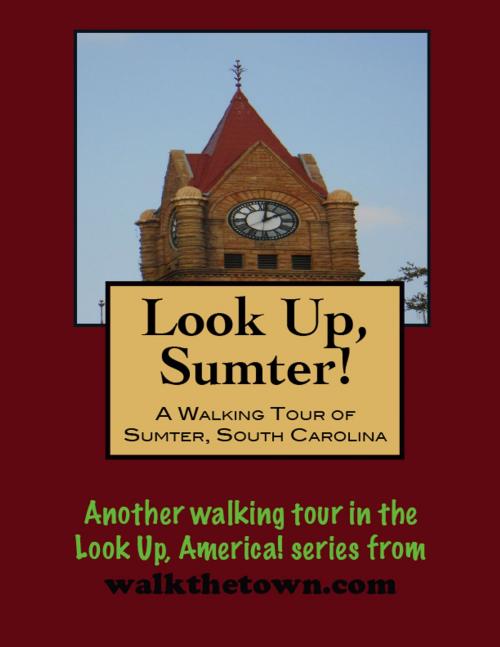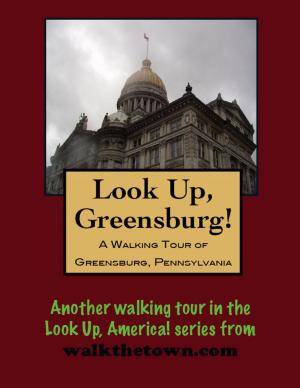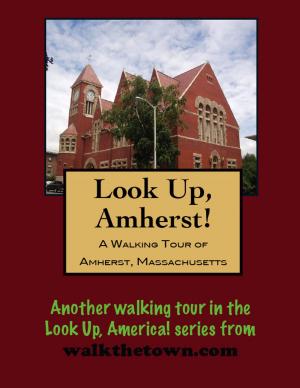| Author: | Doug Gelbert | ISBN: | 9781458193735 |
| Publisher: | Doug Gelbert | Publication: | March 5, 2011 |
| Imprint: | Smashwords Edition | Language: | English |
| Author: | Doug Gelbert |
| ISBN: | 9781458193735 |
| Publisher: | Doug Gelbert |
| Publication: | March 5, 2011 |
| Imprint: | Smashwords Edition |
| Language: | English |
There is no better way to see America than on foot. And there is no better way to appreciate what you are looking at than with a walking tour. This walking tour of Sumter, South Carolina is ready to explore when you are. Each walking tour describes historical, architectural landmarks, cultural sites and ecclesiastic touchstones and provides step-by-step directions.
Every tour also includes a quick primer on identifying architectural styles seen on American streets.
The city of Sumter is the seat of Sumter County and the largest city, the eighth largest metropolitan area in the state of South Carolina. In 1798, the village was selected for the site of the courthouse of old Sumter District. With no access to waterway or railroad, development was slow until the Camden branch of the South Carolina Railroad extended into the town in 1843. Incorporated as Sumterville in 1845, the city’s name was shortened to Sumter in 1855. It has grown and prospered from its early beginnings as a plantation settlement.
The city and county of Sumter bear the name of General Thomas Sumter, the “Fighting Gamecock” of the American Revolutionary War. Born in Virginia in 1734, Thomas Sumter settled in St. Mark’s Parish in 1767. He founded the town of Statesburg, where his financial interests included a sawmill, grist mill, general store and a large plantation. During the Revolution, Sumter fought in numerous skirmishes and battles, including the Battle of Sullivan’s Island, the Georgia Campaign, Turnbull’s camp, Hanging Rock and Fish Darn Ford. His fierce revolutionary zeal had its origins in an incident involving a Captain Campbell, whose men plundered his home, placed his invalid wife in her wheelchair on the lawn and then set fire to the house. This event so enraged Sumter that he formed and led a band of guerillas in victorious combat against the British, helping to turn the tide in the war for independence.
Following the war, General Sumter continued in the service of the young nation, ultimately as a member of the United States Congress. He retired at age 76 to his beloved “Home House” in the High Hills of the Santee, where he continued to actively manage his business affairs and remained a respected figure in the Statesburg community until his death in 1832 at age 98, the last surviving general of the Revolutionary War. General Sumter is buried in Statesburg, the adoptive hometown to which he gave so much.
In 1912, the city of Sumter became the first city in the United States to successfully adopt the council-manager form of government. It is still in effect today. Sumter’s council-manager government combines the political leadership of elected officials in the form of a seven-member City Council headed by the Mayor, with the strong managerial experience of an appointed City Manager, who serves as the chief administrative and executive officer of the city.
Sumter’s political, commercial, and cultural development is reflected in the architecture of the central business district that spans a time period from 1828 to the present. Many of the buildings in the original commercial district date from 1880 to 1912 and are typical of turn-of-the-century commercial buildings, using materials such as pressed tin, limestone, and brick. Detail work of buildings includes arches, columns, decorative brickwork and dentil work. Our walking tour of the downtown historic district, listed in the National Register on April 21, 1975, will begin in front of the town’s most glorious building, practically obscured from the tree-lined street...
There is no better way to see America than on foot. And there is no better way to appreciate what you are looking at than with a walking tour. This walking tour of Sumter, South Carolina is ready to explore when you are. Each walking tour describes historical, architectural landmarks, cultural sites and ecclesiastic touchstones and provides step-by-step directions.
Every tour also includes a quick primer on identifying architectural styles seen on American streets.
The city of Sumter is the seat of Sumter County and the largest city, the eighth largest metropolitan area in the state of South Carolina. In 1798, the village was selected for the site of the courthouse of old Sumter District. With no access to waterway or railroad, development was slow until the Camden branch of the South Carolina Railroad extended into the town in 1843. Incorporated as Sumterville in 1845, the city’s name was shortened to Sumter in 1855. It has grown and prospered from its early beginnings as a plantation settlement.
The city and county of Sumter bear the name of General Thomas Sumter, the “Fighting Gamecock” of the American Revolutionary War. Born in Virginia in 1734, Thomas Sumter settled in St. Mark’s Parish in 1767. He founded the town of Statesburg, where his financial interests included a sawmill, grist mill, general store and a large plantation. During the Revolution, Sumter fought in numerous skirmishes and battles, including the Battle of Sullivan’s Island, the Georgia Campaign, Turnbull’s camp, Hanging Rock and Fish Darn Ford. His fierce revolutionary zeal had its origins in an incident involving a Captain Campbell, whose men plundered his home, placed his invalid wife in her wheelchair on the lawn and then set fire to the house. This event so enraged Sumter that he formed and led a band of guerillas in victorious combat against the British, helping to turn the tide in the war for independence.
Following the war, General Sumter continued in the service of the young nation, ultimately as a member of the United States Congress. He retired at age 76 to his beloved “Home House” in the High Hills of the Santee, where he continued to actively manage his business affairs and remained a respected figure in the Statesburg community until his death in 1832 at age 98, the last surviving general of the Revolutionary War. General Sumter is buried in Statesburg, the adoptive hometown to which he gave so much.
In 1912, the city of Sumter became the first city in the United States to successfully adopt the council-manager form of government. It is still in effect today. Sumter’s council-manager government combines the political leadership of elected officials in the form of a seven-member City Council headed by the Mayor, with the strong managerial experience of an appointed City Manager, who serves as the chief administrative and executive officer of the city.
Sumter’s political, commercial, and cultural development is reflected in the architecture of the central business district that spans a time period from 1828 to the present. Many of the buildings in the original commercial district date from 1880 to 1912 and are typical of turn-of-the-century commercial buildings, using materials such as pressed tin, limestone, and brick. Detail work of buildings includes arches, columns, decorative brickwork and dentil work. Our walking tour of the downtown historic district, listed in the National Register on April 21, 1975, will begin in front of the town’s most glorious building, practically obscured from the tree-lined street...















